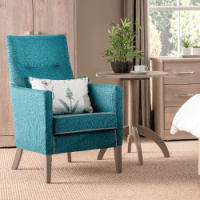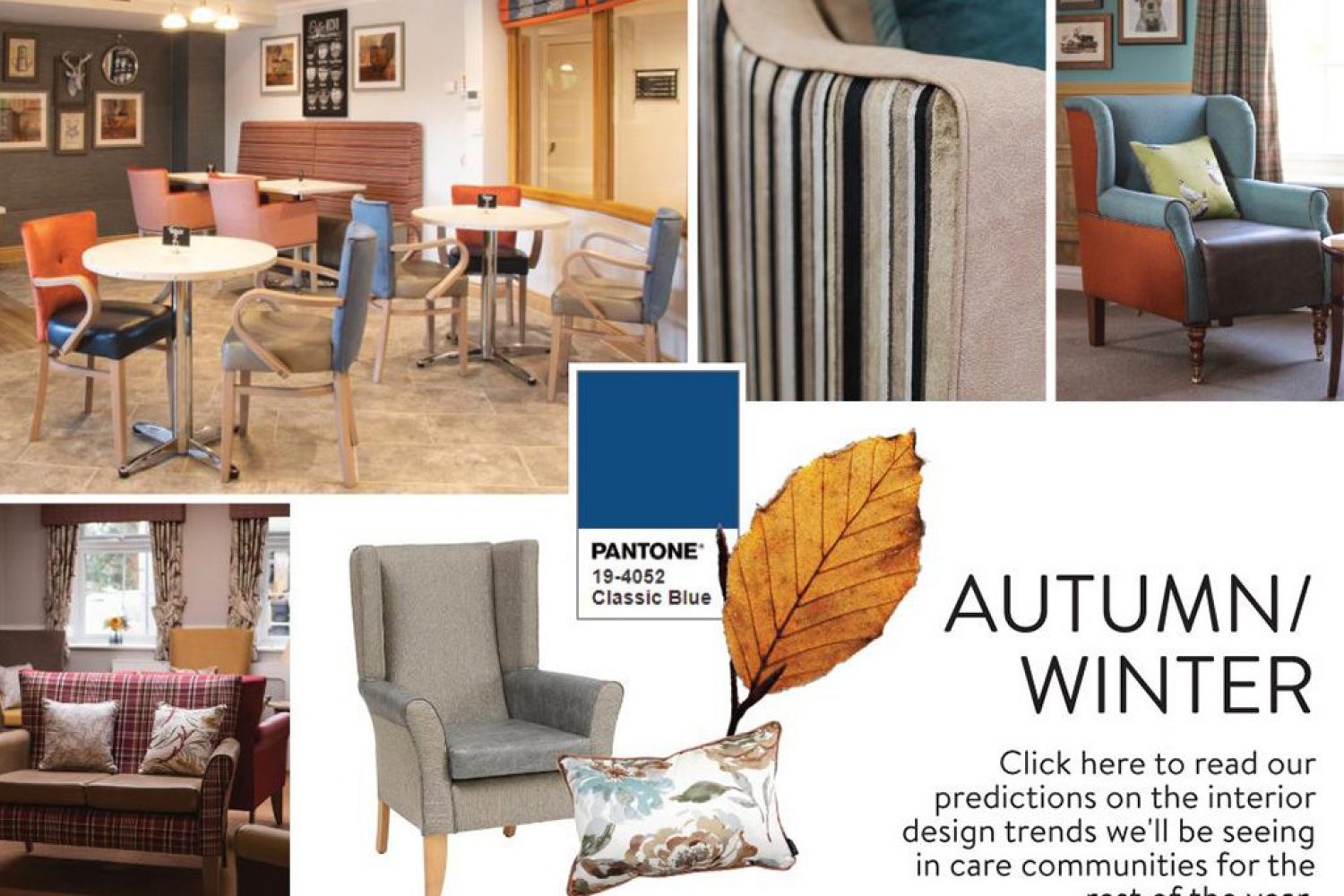- Webinar
- Jordan Cantley
Care Home Recruitment and Marketing In the second episode of our monthly webinar series we discuss care home recruitment and care home marketing tips. Our first speaker is Scott Sherriden, Founder and Managing director
A premium collection of complete room packages designed from the ground up specifically for nursing and care homes.

A premium collection of complete room packages designed from the ground up specifically for nursing and care homes.


As we look forward to the rest of the year and autumn and winter, we’ve put together 4 key design trends for care home interiors that we think we’ll see in the upcoming months. Plus some handy tips on how you can incorporate these styles into your care community.
Following the government’s announcement of the Adult Social Care Infection Control Fund we saw a rush to purchase faux leather lounge and dining chairs due to their perceived superior infection control qualities.

However, it is proven that both faux leather and textiles with anti-microbial protection are equally efficient at infection control and both have equivalent anti-microbial qualities. Textile fabrics give a much more homely look, are breathable and more comfortable for residents with frail skin. As we move into winter a fabric textile will also retain more warmth than a faux leather.
To bring an added element of interest and luxury, faux leathers can be combined with waterproof textiles to provide a duo style that reflects the personality of the home and gives the residents more of a feel of a ‘home away from home’. When you’re next looking at changing your chairs, why not consider a duo style combination of textile and a faux leather in high contact areas such as the seat and arms. A change in upholstery colours and textures on the chair is also helpful for residents living with dementia as this enables them to distinguish the outline of the chair against the flooring and can also help add interest to you care home interiors.
For a full explainer on the differences between textile and faux leather upholstery, click here.
At the start of the year Pantone announced Classic Blue as the colour of the year. Blue, traditionally viewed as a cool colour, can be incorporated into a warming autumn/winter interior scheme for your care home by focusing on using the jewel like sapphire tones, rather than the lighter scandi style shades we see in spring and summer.

Adding a feature wall in a striking colour is a great low cost way of changing up your interiors and can be easily changed at a later date. Alternatively, adding soft furnishings in a sumptuous dark velvet can elevate a plain chair into a cosy seat for a resident to enjoy a cup of tea. Or why not take inspiration from this project we recently completed which combines our grand Collette Highback Chair with the geometric design Corinthia Sapphire (non waterproof) from Panaz with a silver waterproof fabric seat cushion.
Blue is said to be the colour of healers so what could be more ideal for any care setting!
Adding an accent with a nod to a vintage style is perfect for a care home setting. Patterns which bear a resemblance to earlier eras will provoke reminiscence and spark lively conversation and residents often find comfort in a familiar pattern or colour palette. There are many ways to incorporate this style into your care home interiors; upholstery, scatter cushions, throws, curtains and wallpaper or all relatively low cost ways to add this trend into your current theme Archive from Panaz, or the recently released Brodie from Iliv are both great options to use for both soft furnishings or upholstery that will add a touch of vintage and also fun to your environment.

Think about adding Art Deco inspired furniture and furnishings and nods to earlier trends and your interiors will be set to see you through into 2021.
Adding wall art to a care home interior is the finishing touch that can pull all the elements of the room together into a cohesive scheme.
As residents spend more time indoors as we move into winter, providing a stimulating space is an important element of residents’ wellbeing. Scale, orientation and subject matter of you wall art are all important points of consideration.

Choosing whereabouts to put artwork in a room is the first step. The chosen area will the depict the scale you go for. A large space may need a large painting to compliment the area and maximise the surrounding room. A smaller space may require a mirror or a series of similar art pieces that draw the onlooker in for a closer look, therefore augmenting the available room space. Negative space in a room is also important as no one feels at rest in a room covered in clutter. Ensure that you leave enough space around your chosen artwork to make sure the piece isn’t overwhelming.
The orientation of artwork largely depends on the space available to place it. If it’s a definite horizontal space then a landscape piece is usually recommended, as this will compliment the room. The subject matter will often dictate the orientation of the artwork itself.
The colour and style of the artwork should be led by both the style of your home as well as the room itself. Consider artwork that will spark conversation and reminiscence amongst residents, as well as something that is visually stimulating and coordinates with the overall scheme.
If you’d like to discuss your next care home interior design project with one of our expert advisors, don’t hesitate to contact us on 01603 664 900 or sales@furncare.co.uk.
| Cookie | Duration | Description |
|---|---|---|
| cookielawinfo-checkbox-analytics | 11 months | This cookie is set by GDPR Cookie Consent plugin. The cookie is used to store the user consent for the cookies in the category "Analytics". |
| cookielawinfo-checkbox-functional | 11 months | The cookie is set by GDPR cookie consent to record the user consent for the cookies in the category "Functional". |
| cookielawinfo-checkbox-necessary | 11 months | This cookie is set by GDPR Cookie Consent plugin. The cookies is used to store the user consent for the cookies in the category "Necessary". |
| cookielawinfo-checkbox-others | 11 months | This cookie is set by GDPR Cookie Consent plugin. The cookie is used to store the user consent for the cookies in the category "Other. |
| cookielawinfo-checkbox-performance | 11 months | This cookie is set by GDPR Cookie Consent plugin. The cookie is used to store the user consent for the cookies in the category "Performance". |
| viewed_cookie_policy | 11 months | The cookie is set by the GDPR Cookie Consent plugin and is used to store whether or not user has consented to the use of cookies. It does not store any personal data. |